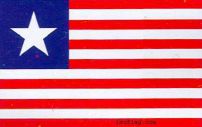 Mere days after Florida formally secedes from the United States of America, the state’s secession flag (pictured) flies over Tallahassee, the state capital. Meanwhile, shots from the Federal garrison in Fort Pickens on Florida’s western boundary force a Confederate reconnaissance mission to retreat. Fort Pickens would be one of few southern forts to remain in Union hands throughout the Civil War.
Mere days after Florida formally secedes from the United States of America, the state’s secession flag (pictured) flies over Tallahassee, the state capital. Meanwhile, shots from the Federal garrison in Fort Pickens on Florida’s western boundary force a Confederate reconnaissance mission to retreat. Fort Pickens would be one of few southern forts to remain in Union hands throughout the Civil War.
Dr. Isaac Smith Coon, a medical doctor, Primitive Baptist minister and slave owner, reflects on the events of the past few days. Having been a secession convention delegate wary of disunion, Coon had eventually voted with the majority for secession. During the war, he served with the Confederate army, as an assistant surgeon. One account notes that the doctor / minister declared that during the war he “had been to Hell and back and could not believe that man would be forced to suffer Hell after his life was over”.
Coon’s views of hell stood apart from most Baptists of the time. His followers were sometimes referred to as “Coonites,” and his church house (in Bradford County) was known as “the No-Hell Baptist Church.” Coon’s name became associated with two-seedism (an unusual view of original sin found in some old Primitive Baptist circles, in which the bodies of damned individuals return to dust and are not resurrected) in south Georgia and Florida.
Sources: Coon source references. See also John G. Crowley, Primitive Baptists of the Wiregrass South: 1815 to Present (University Press of Florida, 1998), p. 125.


